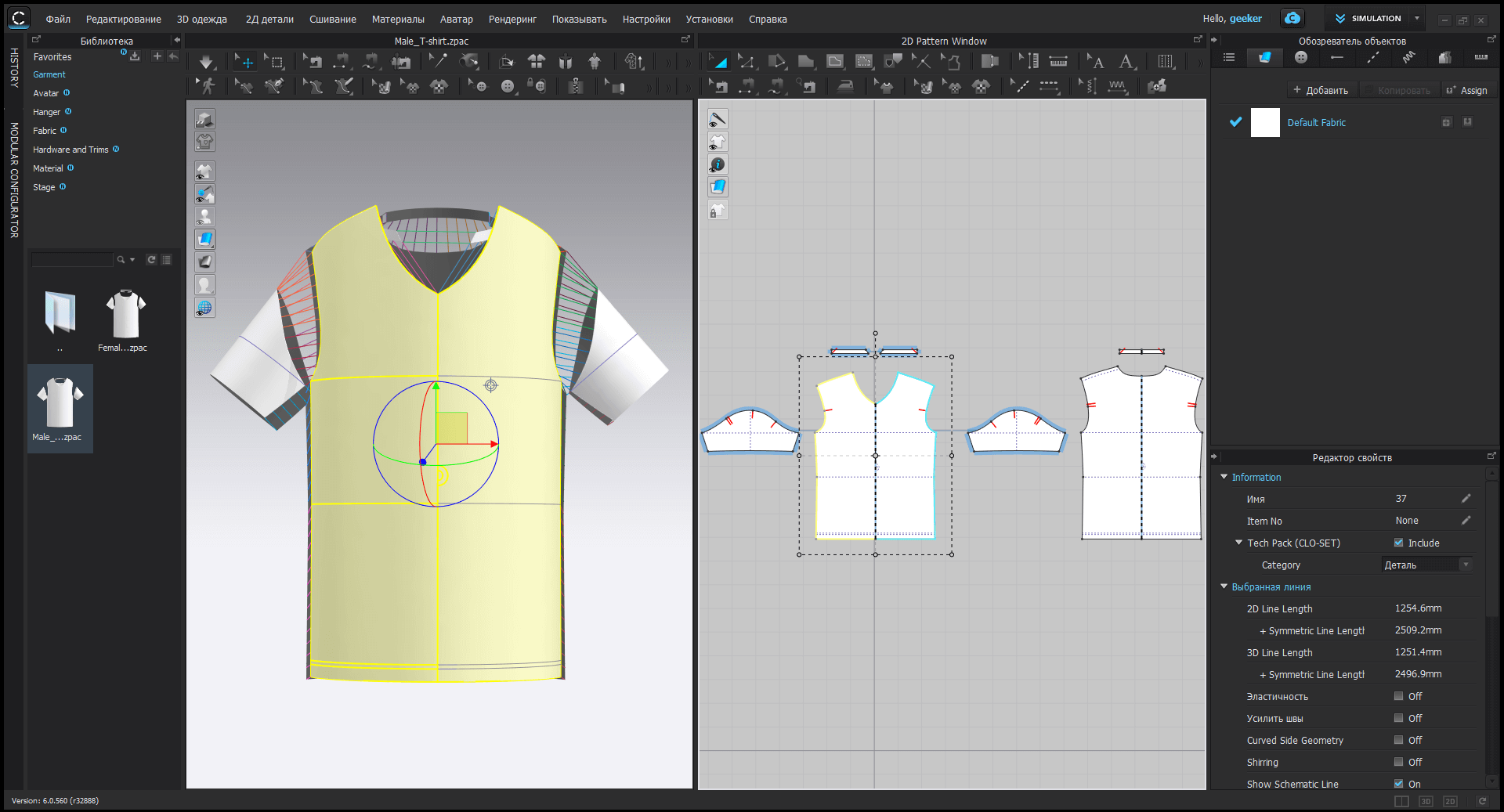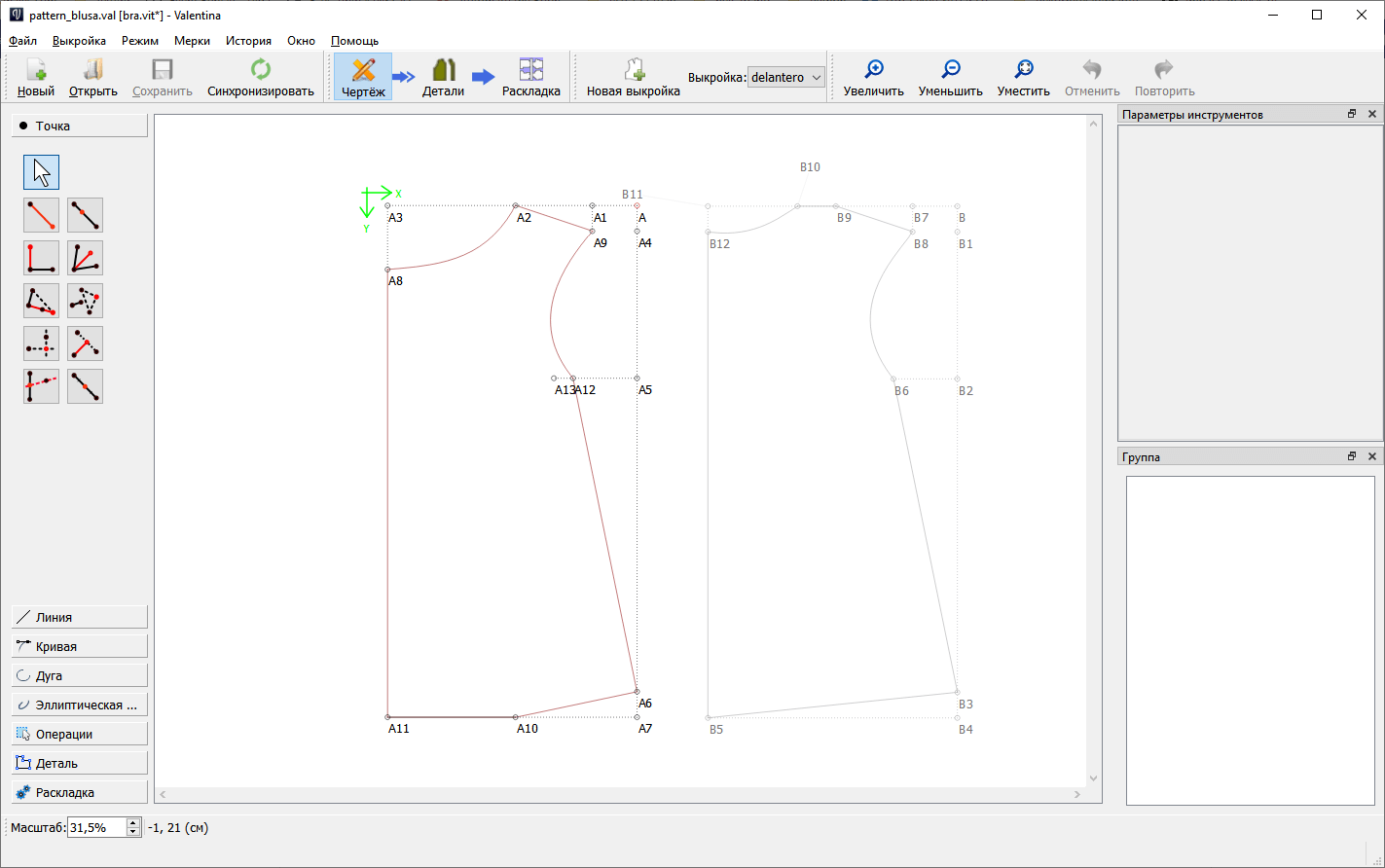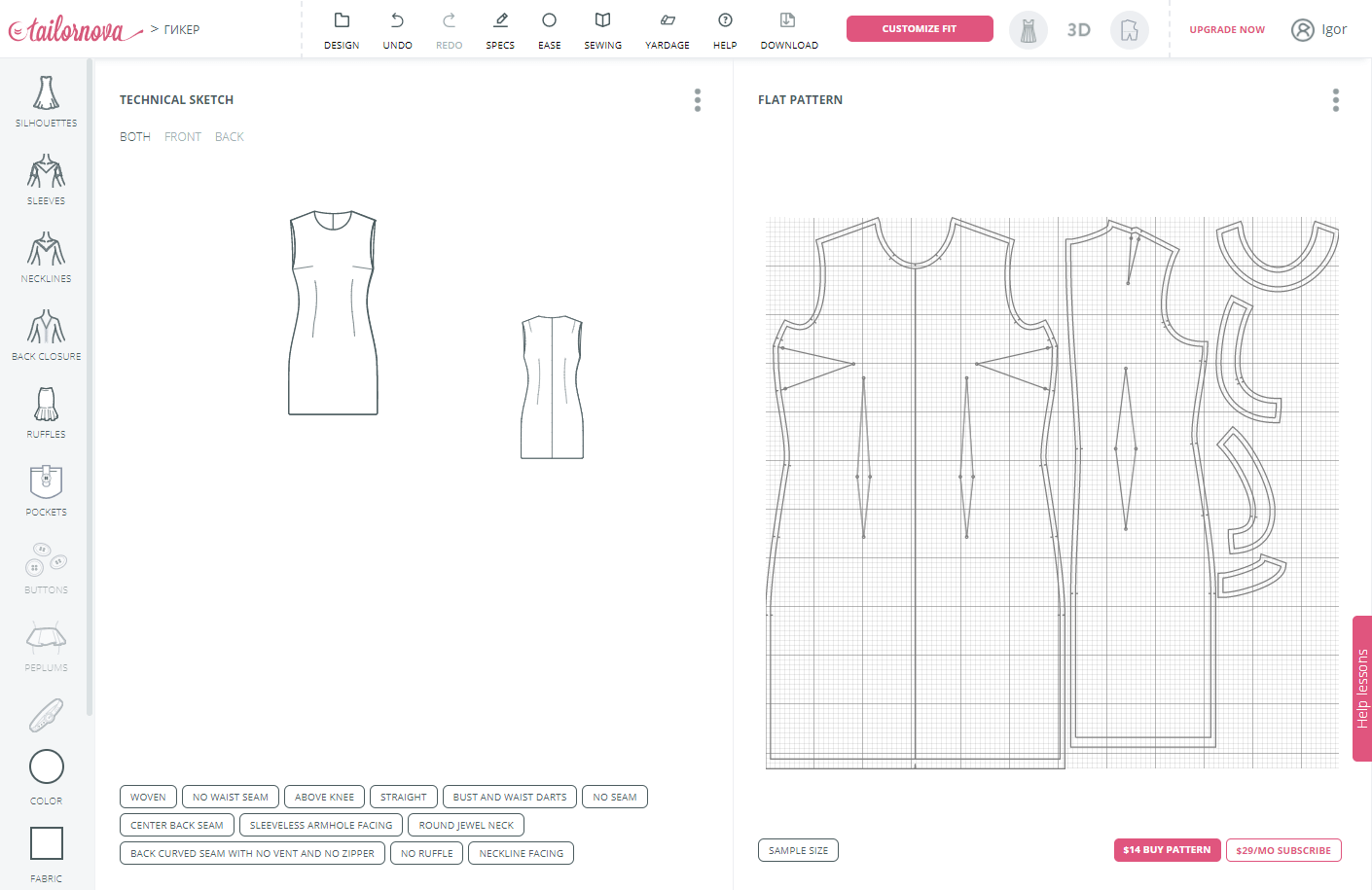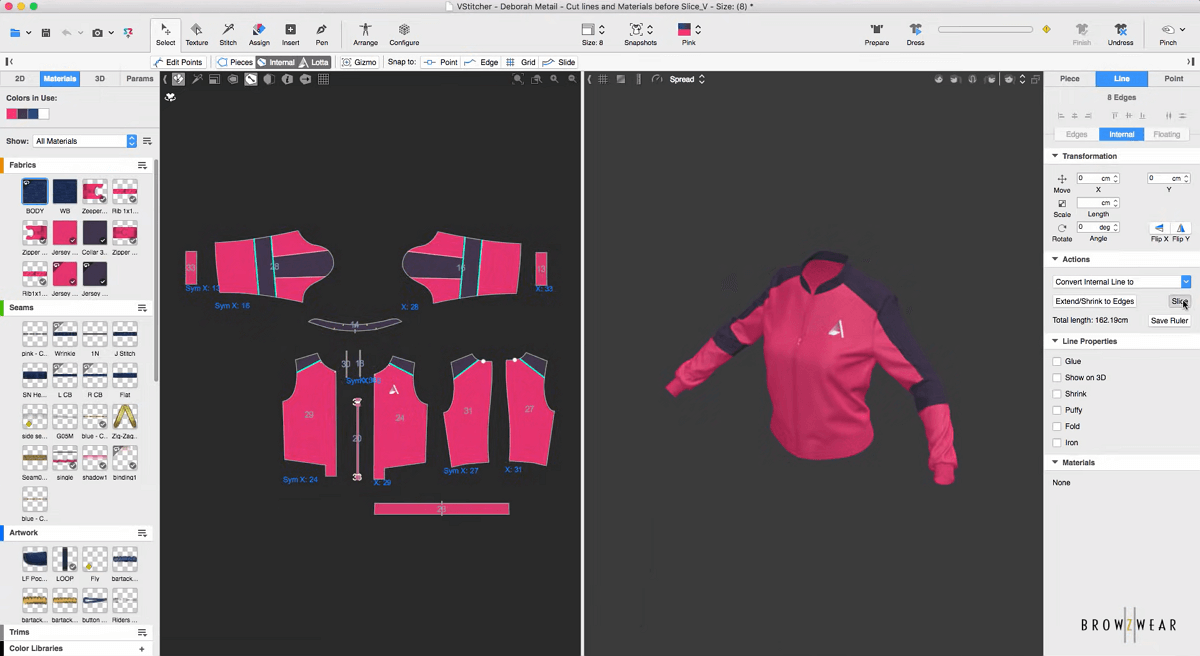Fashion design is developing rapidly. Robots cut and sew, artificial intelligence predicts trends, virtual models are created in virtual realities. Each stage of clothing creation is accelerated through automation and personalization. It is possible to effectively run a fashion business only by understanding this and consciously managing the routine..
Those designers who work in the fashion business today and want to develop systematically can no longer use traditional tools and systems. The best method to differentiate yourself from the competition is by investing in software. The listed programs are suitable for both private designers and small brands and large garment factories.
Clo

Clo is the most popular service for fashion designers, where you can create a simple T-shirt in just 2 minutes. The built-in renderer allows you to create first-class realistic images..
Clo has dozens of ready-made templates and sketches from which you can create your own 3D models of clothing in 360-degree format with the ability to record video. The avatar on which the clothes will be tried on can be edited to bring it as close as possible to the target audience. Here's an example from the home page of the site:

Cool, isn't it? Among the functionality, noteworthy is the automatic size correction, the ability to combine patterns and stitching by segment. And also a library of fabrics is built into the system and there is a tool for adding accessories - buttons, zippers, etc. There is an automatic layout of patterns on the fabric.
To work in a team, the CLOSET workspace is useful, in which you can quickly exchange the necessary files. The service interface has been translated into Russian. The trial version is free for 30 days!
Valentina

Valentina is a free open source sewing program. The program makes it easy to work with colors, styles and patterns. Unique templates can be downloaded from GitLab ..
It is widely used by small brand fashion designers, private tailors, small and medium-sized weaving factories, and in general by many in the garment industry. The project was started by Roman Telezhinsky back in 2013. Now its authors are already running two projects: Valentina and Seamly2D .
The program has more than fifty systems for constructing patterns, parametric patterns are created using mathematical formulas. Drawing tools are provided with instructions, so it won't be difficult to figure it out.
Tailornova

Tailornova makes it easy to create an unlimited number of models with the help of 3D modeling tools, convenient sizing and wide possibilities for combining patterns . The service works online. Users love it for the ability to create their own designs in just a few minutes, simply by choosing suitable sketches and patterns.
The service has ample opportunities for combining patterns that can be easily adjusted to the desired size. There are automatic and manual stock settings. In total, you can generate up to 10 product length options. And using the 3D FitModel algorithm - see how they will look on the model (the result is quite realistic). Finished patterns can be printed or saved in PDF format.
Browzwear

Browzwear , the first company to offer 3D solutions for the fashion industry, was founded in 1999. For apparel designers, Browzwear accelerates the collection design process. Today, Browzwear includes 5 programs, each of which is designed for a specific stage of work:
- Work on projects is carried out in Vstitcher,
- New styles and models are created in Lotta,
- Stylezone will assist in collaboration and sales,
- Smart Design is designed to work with mass production,
- Fabric Analyzer automates material analysis.
With VStitcher, you can design clothes by setting parameters for sizes, fabrics, shades and taking advantage of 3D rendering. Designers can create designs and take them to higher levels by ensuring the garment is fit right during the production process, reworking samples, graduations and other possibilities.
The program is optimal for building the production process, including the creation of samples and their revision, including when changing the contours or modifications of existing samples. There is a fit tool on virtual prototypes to find and fix problems. This allows you to create complex patterns with maximum precision.
Why use special software?
These programs have several advantages. For example, users can easily coordinate and control multiple parallel workflows at once.
Almost any program has ready-made templates, so that even beginners can cope with them without problems. A fashion designer can create several designs at the same time and see his creations in detail even before he even begins to cut.
The ability to securely collaborate further simplifies the process. Costs are significantly reduced, which contributes to increased productivity.
A bit of history
The first fashion designer in history is considered to be Charles Frederick Worth, who started working in 1846. Every Parisian knew his fashion house "House of Worth". That is why Paris became the very first fashion capital.
Then it was more about "Haute Couture" (from the French. "Haute couture"), clothing intended exclusively for members of the royal family and other wealthy persons. Later, fashion designers began to practice mass production. It's time for brands and labels.
Today, clothing creators care about their style, comfort, and more. The industry is growing rapidly thanks to innovative technologies. The rigid Victorian framework is a thing of the past, with modern design tools and systems allowing the freedom to experiment with patterns and styles.
Among the main designers are Valentino Garavani, Giorgio Armani, Coco Chanel, Ralph Lauren, Tom Ford, Keith Spade, Betsy Johnson, Marc Jacobs.